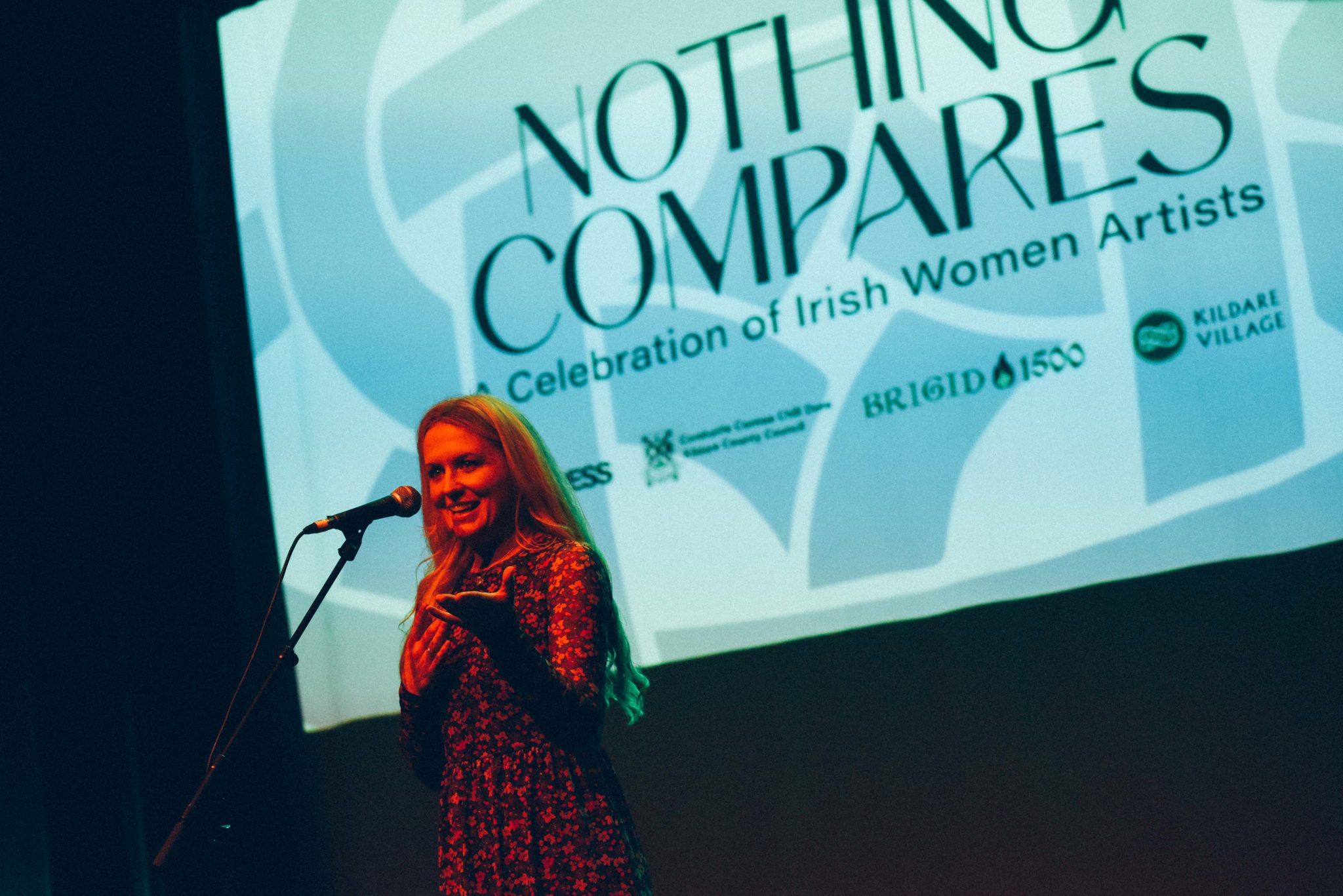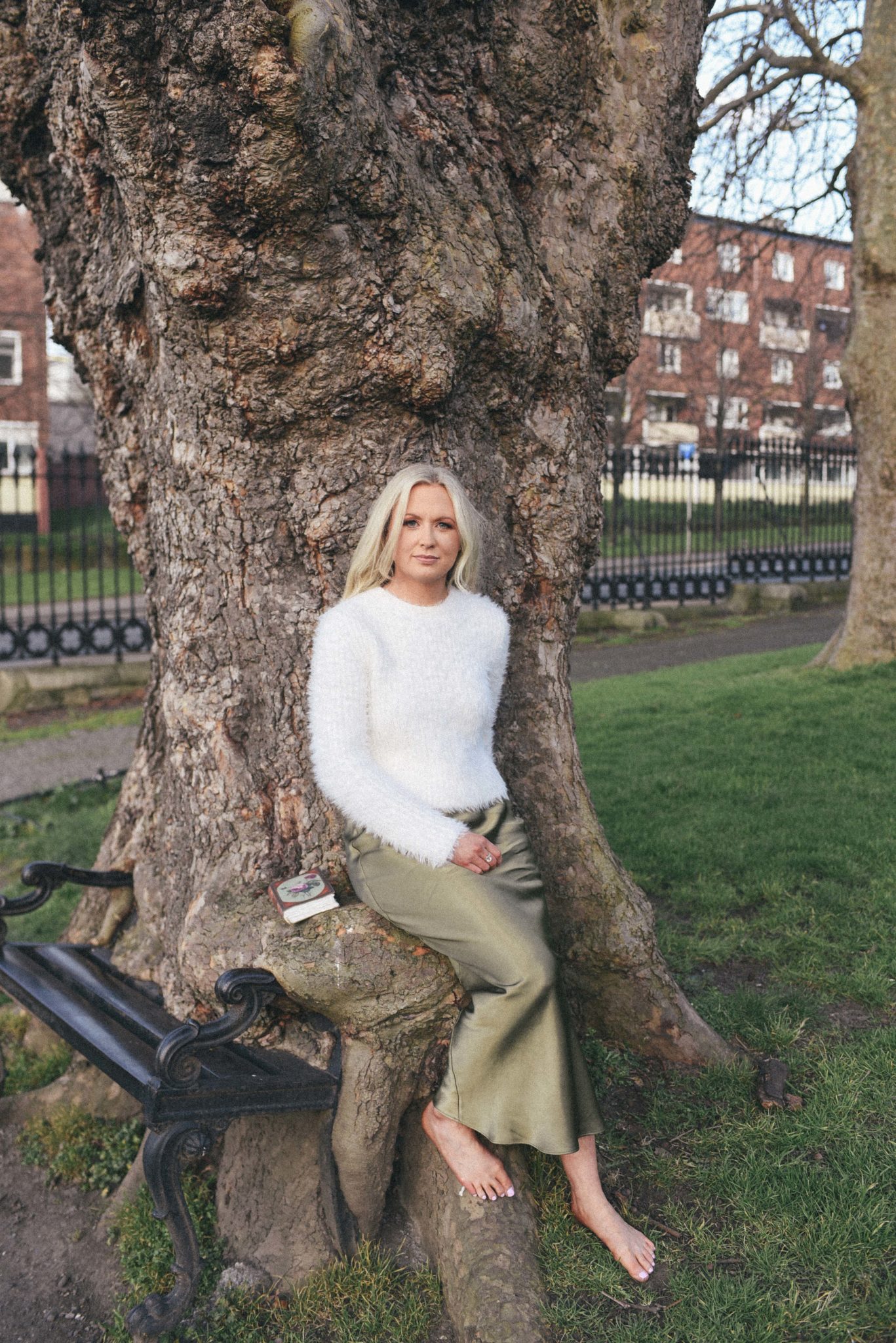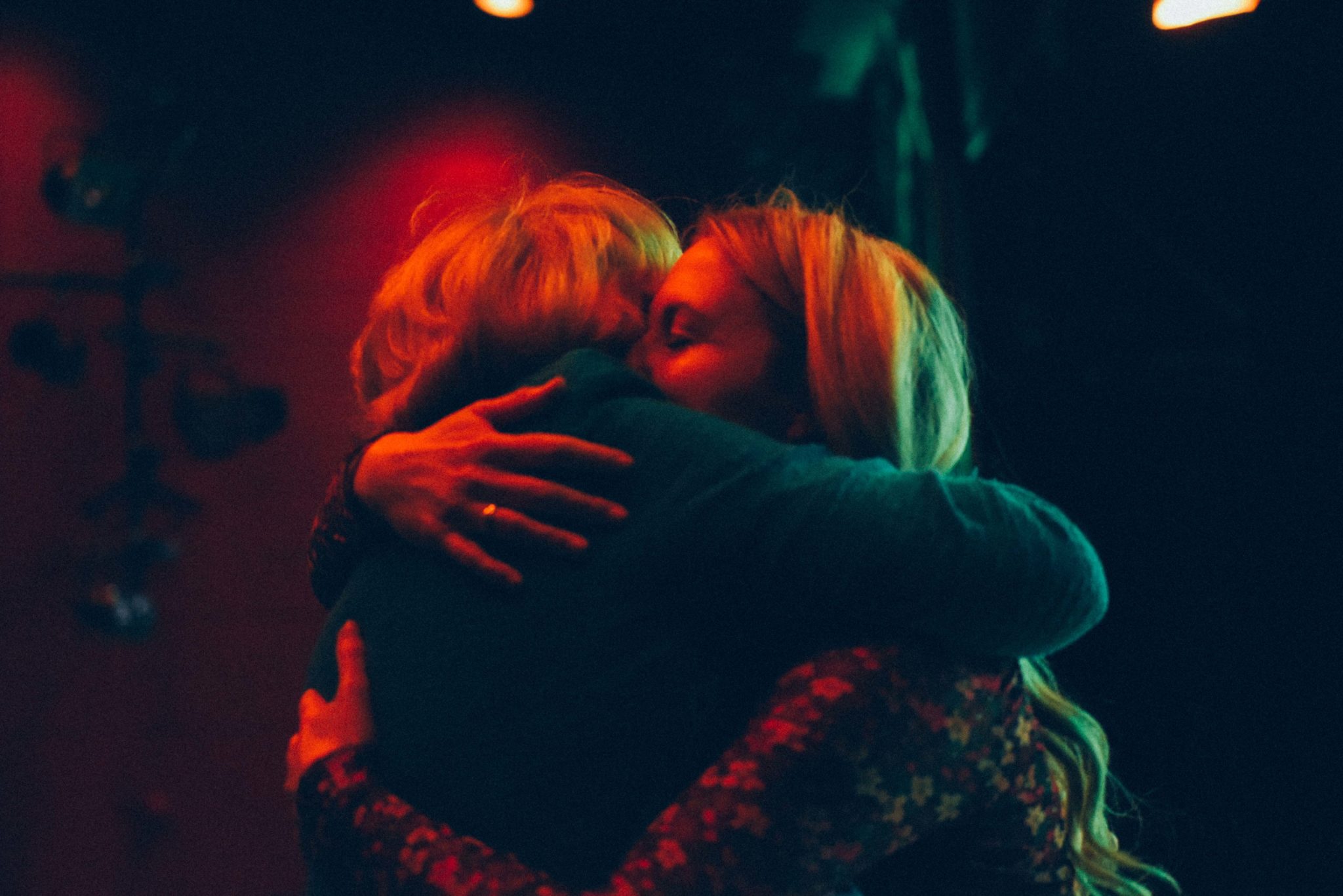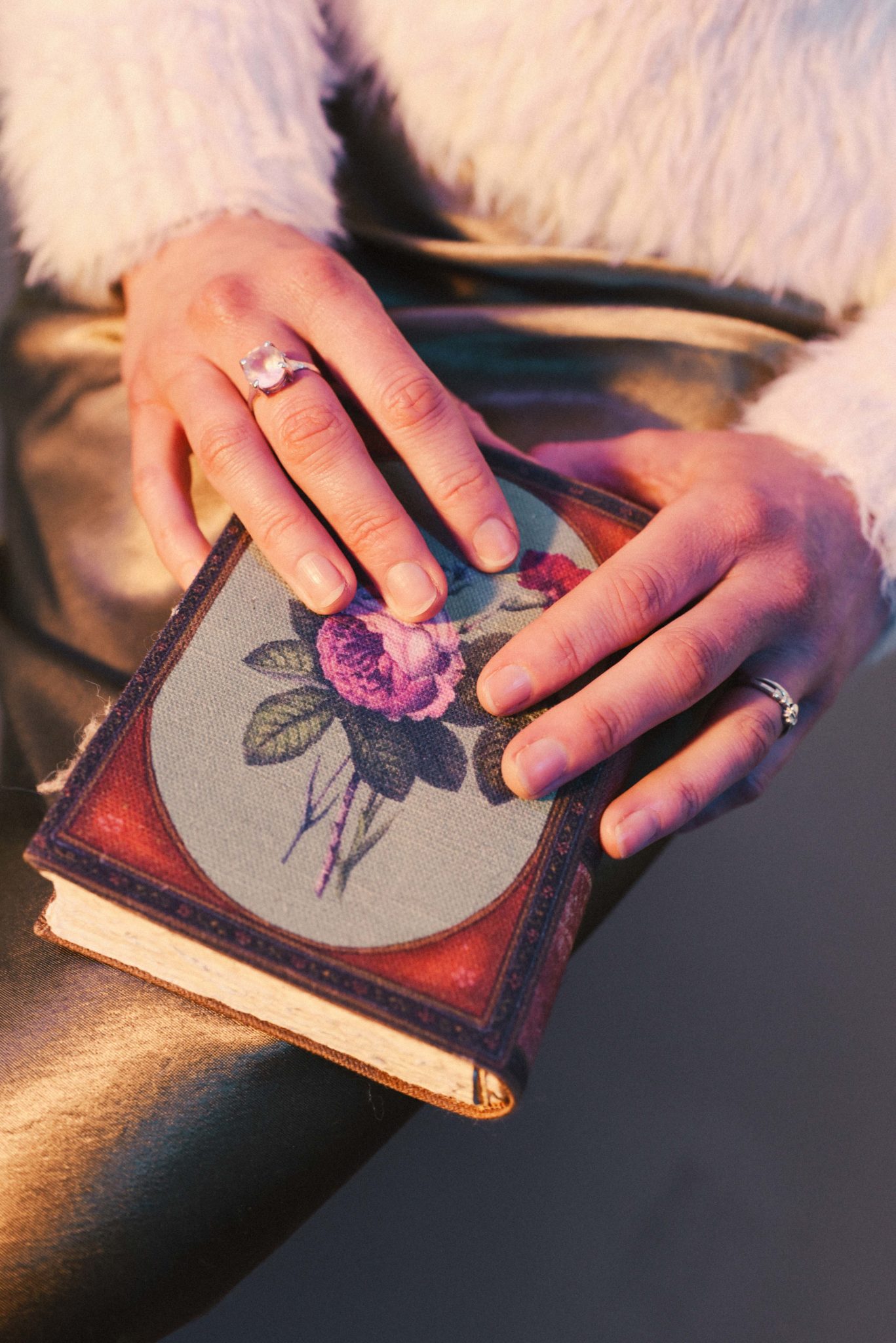- Opinion
- 22 Feb 23
Laura Murphy: "Healing is blocked unless justice is done, truth is expounded, and apologies are given"

Laura Murphy reflects on the remarkable road to establishing Brigid’s Day as a public holiday – discussing the legacy of the Mother and Baby Homes in her own family, the Catholic Church, poetry, activism, the far-right, healing, campaigning with Herstory, reconnecting with ancient Irish traditions, and her gift of imbas forosnai...
Two years ago, in the wake of the Commission on Mother and Baby Homes report – and the horrific revelations, public outcry, gross injustices, and major controversies that came with it – Laura Murphy wrote an open letter.
Addressed to then Taoiseach Micheál Martin, it was a gripping and deeply moving account of a personal and national history shaped by the mistreatment of women, penned by the daughter of a Mother and Baby Home survivor. At the heart of the letter, which would subsequently go viral, was her condemnation of the State apology to the survivors of the institutions – specifically, the Taoiseach’s claim that “we as a society” bore part of the responsibility for the wrongs that were committed, something Laura felt was a “whitewashing of trauma.”
She signed off the letter with a compelling call to action, joining a campaign already kicked off in 2019 by Melanie Lynch, Treacy O'Connor, and Lorna Evers Monaghan: to establish Brigid’s Day as a national holiday, to symbolise “how our society values women and men equally.”
This month saw that vision finally become a reality, with the inaugural public holiday to celebrate Imbolc – the beginning of Spring in Ireland. Laura, now the poet-in-residence at multidisciplinary storytelling platform Herstory, marked the new holiday with a series of events. Among these was a special appearance at Nothing Compares: A Celebration of Irish Women Artists, presented by Hot Press and Kildare County Council, and held in different venues in Naas, Co. Kildare, on February 1st. The central show in the Moat Theatre, featuring Ireland’s first woman Sabina Higgins, Imelda May, Eleanor McEvoy and more, marked the culmination of a remarkable journey for Laura, which she celebrated with a moving performance of her spoken word piece, ‘Is Mise Bríd’.
In the days after the event, she spoke to Hot Press about her journey through poetry, activism, healing, and embracing Ireland’s pre-Christian practices.

Laura Murphy at Nothing Compares: A Celebration of Irish Women Artists in Naas, Kildare. February 1st, 2023. Copyright Miguel Ruiz.
When did you start getting interested in poetry and the arts?
I learned about W.B. Yeats in second year, aged 14. That coincided with me writing my first poem, which was about my mother’s experience of having to give a child up for adoption, and the Mother and Baby Homes. It was called ‘The Forgotten Mother’. On one side of it, I was tapping into the magic that Yeats tapped into, of ancient Ireland. It was also very personally healing for me. From that point on, I got very interested in Yeats, as well as the Celtic Revival, and the power of our mythology. Simultaneously, I was writing for myself – not even to share, but just to express myself.
Was your mother’s experience as a Mother and Baby Homes survivor something you were always aware of growing up?
I was told that my mother found herself pregnant before she got married, and that she was forced to go to a Mother and Baby Home. She thought that she deserved to carry the shame – and that this was a normal thing that would happen, that women would be put into the homes. So growing up, the only thing I was really aware of was the shame that she carried, because I carried that too. Now, I wasn’t born in a Mother and Baby home – I’m the first child that she had when she was married. But I was acutely aware of the shame and the sadness that she carried all her life – not even so much from what she was saying, but I would just feel it from her, and every so often she would cry.
Would you have considered yourself spiritual from a young age?
I was quite spiritual at that time, without really having a name on it, or understanding it. I would have been reading different things about Buddhism and Hinduism. I just didn’t feel that the Catholic Church was speaking to me. My stomach used to feel sick when I was in mass, with the altar full of men, and no women. It didn’t make sense to me. But yet, I loved the power of gathering in the church, and the sense of sacredness and contemplation.
You were also exploring healing from a young age.
When I was 14, I had also discovered this hands-on healing ability that I didn’t fully understand – because I had never heard of anything like that at the time. It was just an innate thing that arose when my mom was in a crash, and she was in chronic pain for a year. I just very basically and simply focused love out through my hands – and that was able to take her pain away until she got the operation that she needed.
You also discovered the gift of imbas forosnai, after finding yourself entering a “mystical kind of state” when taking part in the inaugural Brigid’s Way Pilgrimage in 2013. Had you heard of the practice before?
I, like most people in Ireland, had never heard of imbas forosnai. Eimear Burke, a renowned druid who was a pilgrim on the journey as well, explained it was this higher state of consciousness that the ancient poets of Ireland used to go into. It was a gift of the goddess Brigid, and it would infuse the person’s poetry with the qualities of the goddess: wisdom, inspiration and healing. I did a bit of reading up on it, and I realised that this was central to how ancient Irish society flourished. The poets used practices for imbas to divine wisdom, and then advise the king, so the king would be able to lead and right relationships with the people and the land.

Laura Murphy. Copyright MIguel Ruiz. Make-up: Amy El Fehli Hair: Dylan Byrne
What’s the significance of imbas forosnai in a modern setting?
I was like, ‘Has this got anything to do with why Ireland punches way above our weight in music, poetry and literature – that we have this thing in our cellular memory?’ There’s very little still written about it, because as part of the Catholic religion, and their control, our practices for imbas forosnai were banned. But we have some bits written in the mythology. When Fionn Mac Cumhaill caught the salmon, and got the knowledge of all things, what he got – what’s written down in the ancient texts – is imbas forosnai. I understood that my purpose was to revive this ancient practice, and bring it out into the world. That’s what I’ve been doing for the ten years since. There was a three-year stint where I was very sick, debilitated in bed with lyme disease. This imbas really helped me navigate through all of that.
What motivated you to get involved in activist work around the Mother and Baby Homes?
I started to understand that the first generation survivors were being thrust into another re-traumatisation – and it’s very hard for most of them to speak, when they’re being re-traumatised. I realised then that I was close enough to the situation to understand it and to speak with authority, but also distant enough to be able to speak with clarity, and not in a way that’s going to re-traumatise me. I realised I had a responsibility. There were very few people in the position that I was in – with my communication skills, imbas, and being a second generation survivor. I needed to speak up.
And that led you to pen your open letter to the Taoiseach?
In 2021 when the Taoiseach apologised to Mother and Baby Home survivors, I was in a debilitated state, barely able to text my friends. My mental, cognitive faculties were at an all-time low. But when he apologised, and he blamed society for the atrocities, all this anger started bubbling in me, and it was getting stuck. It was hopping off all this intergenerational trauma that I had. So I went about writing a Facebook post. Then I got into this flow that came from nowhere – and this 12-minute letter to Taoiseach was written. I had barely written a text in about a year. I was looking down at this thing going, ‘How?’ The coherence of the whole thing was astounding. I had a feeling as it was coming, that it was imbas.
That letter included the call to make Brigid’s Day a national holiday. What did you hope, at that time, that the holiday would symbolise?
To honour Ireland’s intent to move into a new era of equality, and a new era of compassion and healing – guided by Brigid’s principles. The main point of the letter was that women fought equally to men to win Irish independence. And when we got it, we were written out of history, and out of society.
What did the campaign to make it a public holiday involve?
We campaigned with Herstory. There were very practical things involved, like lobbying the government, and emailing. I got on to as much media as I could. It was fuelled not by large budgets, but by a group of people who came together to share their gifts for the greater good.
At the Nothing Compares event in Naas, you were full of praise for President Michael D. Higgins and his wife Sabina.
That was really a revival of imbas. The imbas poets’ job was to call out the leaders, if they weren’t leading in the right relationship – which I had done with Micheál Martin two years before. But their job was also to exalt the leaders who were. With Michael D. Higgins and Sabina, we can really contextualise the significance and the relevance of Brigid – and also, not take for granted the calibre of leaders that they are. There were so many historical moments that night.

Sabina Higgins and Laura Murphy at Nothing Compares: A Celebration of Irish Women Artists in Naas, Kildare. February 1st, 2023. Copyright Miguel Ruiz.
In the open letter, you refer to “the male-led Catholic Church”and their “unaccountable religious and moral power.” Do you think the Catholic Church will always be, at its core, a sexist institution?
I think it will. They’re never going to allow women priests – even when the Church has a shortage of priests. It’s a real shame, because Jesus’ original teachings were powerful, and so relevant today. And actually very aligned with Brigid. The Catholic Church continuing to be misogynistic is blocking people from connecting to the original message of Jesus, which is all about love and compassion.
There’s no way to make up for the devastation they’ve caused, but what do you think the Church could do tomorrow morning, to help people in their attempts to heal?
The Government are discussing a plan for redress for survivors. But 40% of survivors are not going to get any redress or compensation. Survivors that were less than six months in the home are not going to get anything. That’s a real re-traumatisation. You’re basically saying, ‘You were separated from your mother for all of your life, with all of the wounds that come from that – but that’s not worth actually acknowledging in any form of redress’. The Government is saying we haven’t got enough money to pay all the survivors – but the Church aren’t coming forward with any money. And that’s incredible, because the Church made huge money off the labour from women in the Magdalene Laundries, and the Mother and Baby Homes. They also made a significant amount of money through adopting their children, and through the trafficking of children – which has all been proven.
Are official apologies and genuine acknowledgements also important?
I was so heartened to see the Pope go to Canada to the residential schools last year. It was a re-traumatisation, again, for those people, but it was healing. They have so many of their babies buried in different plots of land that are unmarked and unnamed as well. The Pope actually coming to acknowledge the extent of the harm that was done, and to say sorry – it never undoes the damage, but it opens the way for healing to happen. For these survivors in Canada and Ireland, their healing is blocked unless justice is done, truth is expounded, and apologies are given.

Pope Francis in Canada
Was your mother able to find healing?
My mam found healing when she found her purpose. When I found my healing abilities at 14, she was so astounded by them that she researched what this could be. And she discovered Reiki. So, she brought me to get trained up in Reiki, and then she got herself trained. She’s been a Reiki healer for over twenty years. That’s when her healing started. It was like she was able to transmute a lot of the trauma and shame through that. But it’s been a lifelong healing journey. There’s been significant healing for her initiated through the letter to the Taoiseach, but mostly, in all of the activity and energy around Brigid’s Day.
In what sense?
It’s almost like my mam’s come full circle in her healing. She had a book written about 10 years ago, but she was missing some chapters. She wasn’t able to write a chapter about the Mother and Baby Homes, and that’s the crucial one that needed to go in. So it sat on the shelf for about 10 years. Then, literally on the day that I was carrying Brigid’s flame, as one of her nineteen flame carriers at the procession on True Imbolc in Kildare, she went to Galway – and the Mother and Baby Home chapter flowed. She hadn’t picked up a pen in ten years. I said, “Why do you think it flowed then?” And she just said, “It’s all of this healing around Brigid’s Day. For the first time ever, I felt no shame.”

Laura Murphy. Copyright MIguel Ruiz.
In some ways – particularly as a result of the pandemic – we’ve never been more trusting in the power of science. Why then do you think that more and more people are at the same time becoming interested in these spiritual practices?
It’s because people are becoming more disconnected. Depression and suicide have probably never been so prevelant. The Earth is near destruction. The promise of the enlightenment was progress, and science was progress – but where has it led us, only to near cataclysm, unhappiness, and disconnection? So people are realising that a lot of our ancient wisdom traditions have exactly the kind of wisdom we need to move ourselves out of the horror show that we are in. And that’s by connecting to nature. There was no modern science around 3,000 years ago, but our druids knew that the trees were sacred. Trees are what keep us alive on the planet, and our druids had no scientific ways to understand how trees emit oxygen and things like this – but they knew that trees are life, and they honoured them.
For many people, it’s also about shedding the culture of shame fostered by the Catholic Church, particularly in terms of sexuality.
The Catholic Church forced us to believe our bodies are shameful, and that pleasure and sex were sinful. We should never have been disconnected from our bodies. Our bodies are sacred. There’s nothing evil about them. We weren’t born with original sin. By connecting with our own bodies, each other, and the planet, we can thrive. So, people are moving into these spiritual practices – whether it’s meditating, or working with imbas forosnai – and they’re not relying on blind faith.
Catholic schools in Ireland have generally taught children about Brigid the saint, but not always Brigid the goddess – do you think there needs to be a reclaiming of the goddess through education?
Definitely. If we continue to just focus on the saint, we exclude atheists, and we exclude people who are not Catholic. St. Brigid was a formidable woman – but we need to understand that the reason that she was so formidable is because she connected with and embodied the archetype that is Brigid. And that is what we should be teaching in schools.
On Brigid’s Day, you shared a new version of Brigid’s Cross on social media – which incorporates both feminine and masculine elements. What were you hoping to achieve with that?
I designed this new Brigid’s cross with a friend of mine, basically as a symbol for reclaiming the original cross of ancient Ireland. This new cross of Ireland can be pangender, pan-national, and inclusive to all – as is Brigid’s way. I was very mindful to do something on its first ever national holiday, to make sure people had a symbolic representation to really understand that, for Ireland, Brigid’s Day signals this new wave of inclusivity, balance, and equality.
View this post on Instagram
The inaugural public holiday has also come at a time marred by ongoing anti-immigration protests in Ireland. Does that upset you – as something that goes completely against those ideas of inclusivity and equality?
It was deeply disturbing to see. What was very disturbing was to see how the far-right mouthpieces were actually using the crisis of violence against women to put forward their anti-refugee and anti-immigrant rhetoric. Most women who are victims of violence, the perpetrators are known to them – they’re within their families or within their own communities. It was deeply disturbing to see the level of hate, and the level of mistruth. These people from the far-right are appealing to the worst of us, and so many people in Ireland responded to that. They responded from a place that was the opposite of higher nature – they responded from a place of anger, a place of hate, and a place of fear. That ends up in violence and misery for everybody. We went over to America and Australia in our time of need. We were welcomed, and we made lives for ourselves in other countries. How that can be forgotten in the space of two generations is beyond me.
Does it make you feel hopeless?
The light will always outshine the dark. There are so many people now realising the power of Brigid, and realising that compassion doesn’t equal weakness. There is actually such strength in numbers – and the amount of people that are connecting with Brigid, and believing in her qualities and message, is going to increase year on year. Our light is going to get stronger, and that will drown out all of these dark voices that are trying to destroy peace.
RELATED

- Opinion
- 16 Dec 25
The Irish language's rising profile: More than the cúpla focal?

- Opinion
- 13 Dec 25








